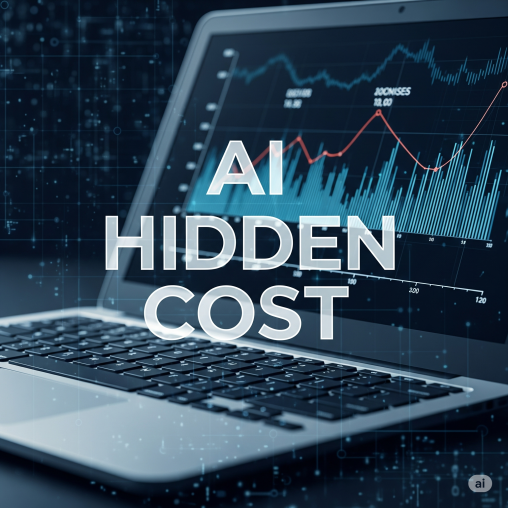Artificial intelligence is rapidly reshaping our world, promising unparalleled efficiency, innovation, and progress. From powering our smartphones to revolutionizing medical diagnoses, AI’s potential seems limitless. However, beneath the gleaming surface of technological advancement lies a complex web of “hidden costs” that demand our attention. Ignoring these often-unseen expenses risks undermining the very benefits AI aims to deliver.
The Environmental Footprint
The digital world, for all its ethereal appearance, has a very real physical impact. Training and operating sophisticated AI models, especially large language models (LLMs), require immense computational power, which translates directly into staggering energy consumption. This reliance on electricity, often generated from fossil fuels, significantly contributes to greenhouse gas emissions and accelerates climate change. Some estimates suggest data center energy consumption could soon rival that of entire countries.
Beyond electricity, water usage is another critical concern. Data centers need vast quantities of fresh water for cooling, with a single AI model training session potentially consuming millions of liters. And let’s not forget the growing mountain of e-waste generated by the constant upgrade and disposal of specialized AI hardware, replete with hazardous materials. The lack of transparency from many AI developers on their environmental impact further compounds this issue, making it difficult to accurately assess and mitigate these costs.
Societal Ripples
AI’s integration into society brings with it profound implications that extend far beyond technical performance. One of the most discussed is job displacement. As AI automates routine tasks, certain job sectors face significant disruption, potentially leading to unemployment and exacerbating economic inequality. While AI may create new roles, the transition demands proactive reskilling and support for affected workers.
Then there’s the pervasive issue of bias and discrimination. AI systems learn from the data they’re fed, and if that data reflects historical societal biases, the AI will perpetuate and even amplify them. This can lead to unfair outcomes in critical areas like hiring, lending, and criminal justice. Furthermore, AI’s insatiable appetite for data raises serious privacy concerns and opens new avenues for cybersecurity threats.
The “black box” nature of many advanced AI algorithms also presents a challenge to accountability. When AI makes a problematic decision, understanding why can be incredibly difficult, complicating efforts to assign responsibility. This concentration of AI development in the hands of a few powerful entities also raises questions about market power and the potential for undue influence.
Ethical Quandaries
As AI becomes more sophisticated, so do the ethical dilemmas it presents. Decisions once solely in human hands are increasingly being delegated to algorithms, raising complex questions about fairness, autonomy, and the very definition of responsibility. The ability of AI to generate highly convincing fake content (deepfakes) and spread misinformation also poses a serious threat to public trust and democratic processes.
Another burgeoning concern revolves around intellectual property rights. When AI models are trained on vast datasets of human-created content, who owns the intellectual property of the AI’s output? How should creators be compensated when their work is effectively used as training material? These are thorny legal and ethical questions that society is just beginning to grapple with.
Moving Forward Responsibly
Understanding these hidden costs isn’t about halting AI progress; it’s about guiding it responsibly. To truly harness AI’s benefits, we must collectively commit to:
- Sustainable AI Practices: Prioritizing energy-efficient algorithms, using renewable energy for data centers, and developing robust e-waste management strategies.
- Ethical AI Development: Building AI systems with fairness, transparency, and accountability as core principles, and actively mitigating bias.
- Proactive Societal Planning: Investing in education, reskilling initiatives, and social safety nets to prepare for AI-driven workforce transformations.
- Robust Regulation and Governance: Establishing clear legal frameworks for data privacy, intellectual property, and AI accountability.
By acknowledging and addressing the unseen price tag of AI, we can ensure that this transformative technology serves humanity’s best interests, rather than inadvertently creating new challenges.
What steps do you believe are most critical for mitigating AI’s hidden costs?
Discover more from Nexus
Subscribe to get the latest posts sent to your email.
